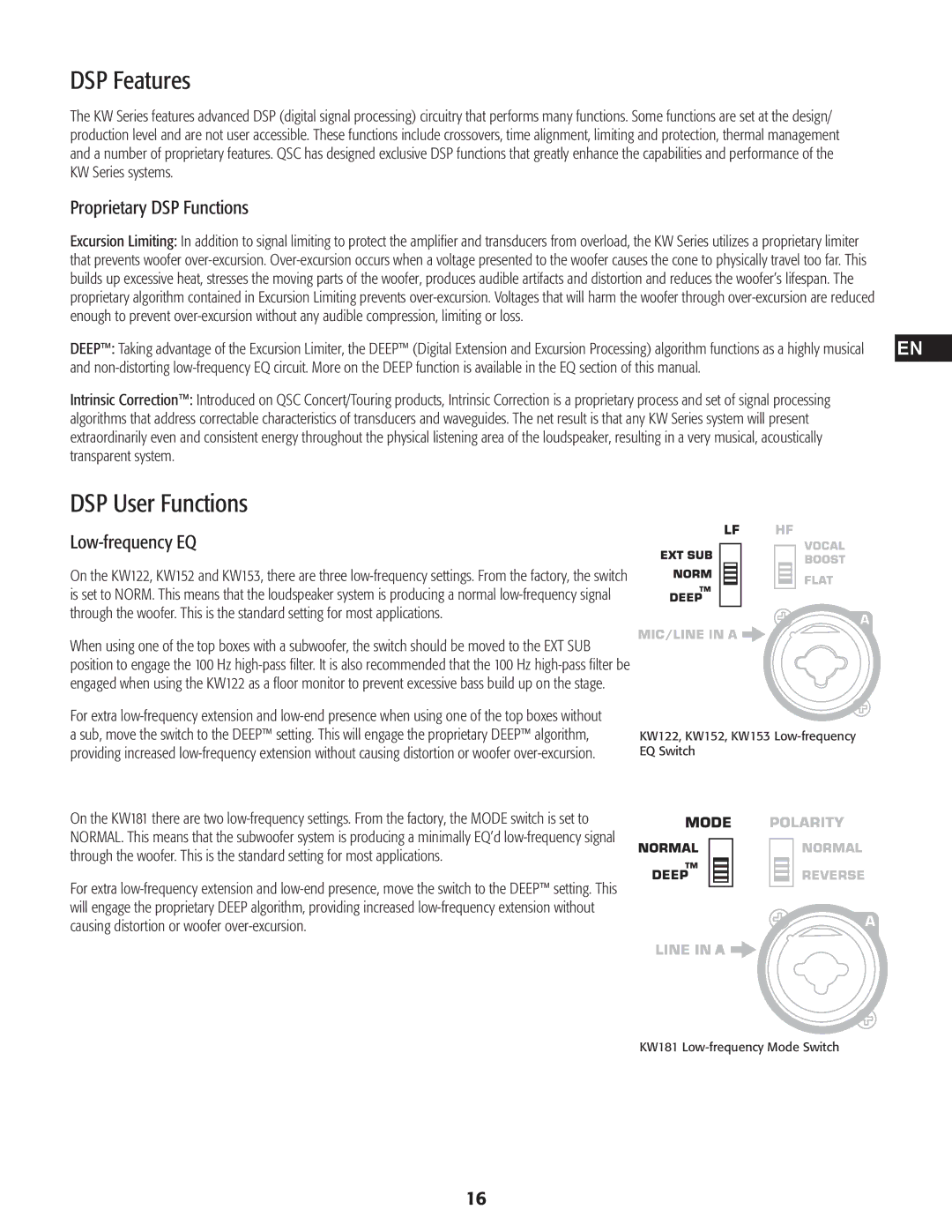
DSP Features
The KW Series features advanced DSP (digital signal processing) circuitry that performs many functions. Some functions are set at the design/ production level and are not user accessible. These functions include crossovers, time alignment, limiting and protection, thermal management and a number of proprietary features. QSC has designed exclusive DSP functions that greatly enhance the capabilities and performance of the KW Series systems.
Proprietary DSP Functions
Excursion Limiting: In addition to signal limiting to protect the amplifier and transducers from overload, the KW Series utilizes a proprietary limiter that prevents woofer
DEEP™: Taking advantage of the Excursion Limiter, the DEEP™ (Digital Extension and Excursion Processing) algorithm functions as a highly musical | EN |
and |
|
Intrinsic Correction™: Introduced on QSC Concert/Touring products, Intrinsic Correction is a proprietary process and set of signal processing |
|
algorithms that address correctable characteristics of transducers and waveguides. The net result is that any KW Series system will present |
|
extraordinarily even and consistent energy throughout the physical listening area of the loudspeaker, resulting in a very musical, acoustically |
|
transparent system. |
|
DSP User Functions |
|
Low-frequency EQ
On the KW122, KW152 and KW153, there are three
When using one of the top boxes with a subwoofer, the switch should be moved to the EXT SUB position to engage the 100 Hz
For extra
On the KW181 there are two
For extra
KW122, KW152, KW153
KW181
16
